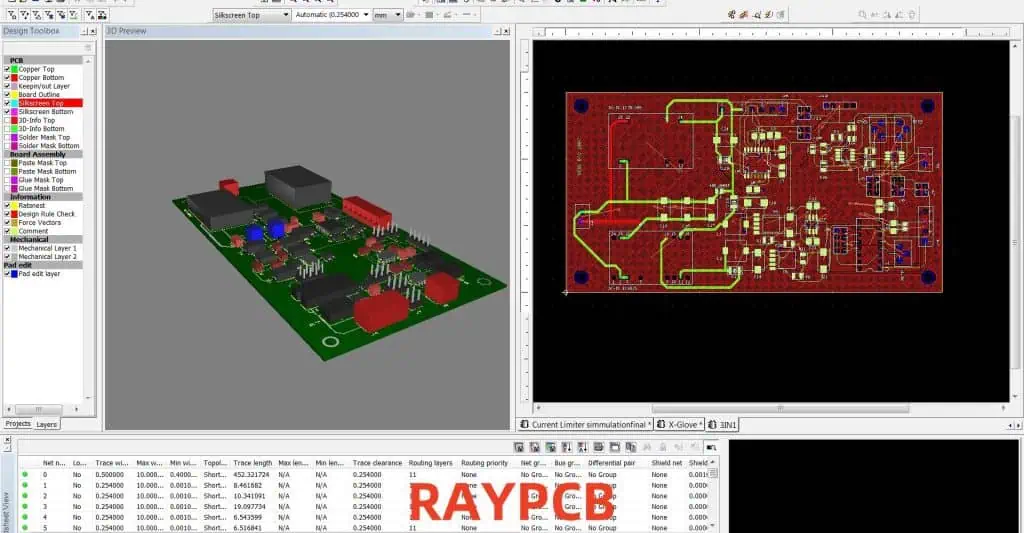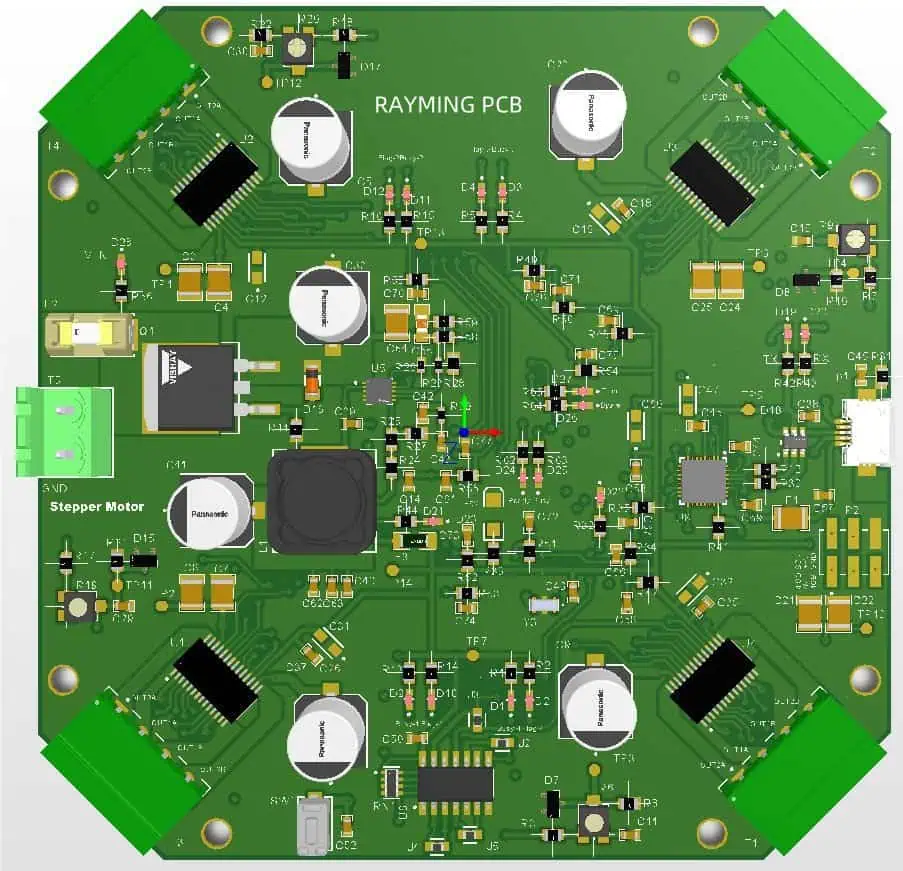In the rapidly evolving field of electronics, the design and optimization of circuits have become increasingly complex. Traditional methods of circuit design, while effective, often struggle to keep pace with the demands of modern technology. Enter machine learning (ML), a powerful tool that is revolutionizing the way we approach electronic circuit design. This article explores the intersection of machine learning and electronic circuit design, discussing how ML techniques can be leveraged to create more efficient, robust, and innovative circuits.
The Challenges of Modern Circuit Design
Complexity and Scale
Modern electronic circuits are far more complex than their predecessors. With the advent of nanotechnology and the push for more functionality in smaller packages, circuit designers face unprecedented challenges:
- Increasing number of components
- Tighter integration of subsystems
- Higher operating frequencies
- Stricter power consumption requirements
- More stringent reliability standards
These factors combine to create a design space that is often too vast and intricate for traditional methods to explore efficiently.
Time-to-Market Pressures
In today’s competitive market, there is constant pressure to reduce the time-to-market for new electronic products. This puts additional strain on the design process, requiring faster iterations and more efficient optimization techniques.
Performance Optimization
Achieving optimal performance across multiple parameters (speed, power consumption, reliability, cost) is a multi-dimensional problem that often involves trade-offs. Finding the best balance among these factors is a complex task that can benefit greatly from advanced optimization techniques.
Machine Learning: A Game-Changer for Circuit Design

What is Machine Learning?
Machine learning is a subset of artificial intelligence that focuses on the development of algorithms and statistical models that enable computer systems to improve their performance on a specific task through experience. In the context of circuit design, ML can be used to:
- Predict circuit behavior
- Optimize component values
- Generate new design topologies
- Automate the design process
Types of Machine Learning Applicable to Circuit Design
Supervised Learning
Supervised learning algorithms learn from labeled data. In circuit design, this could involve training models on existing high-performance circuits to predict the behavior of new designs.
Unsupervised Learning
Unsupervised learning algorithms find patterns in unlabeled data. This can be useful for discovering novel circuit topologies or identifying clusters of similar designs.
Reinforcement Learning
Reinforcement learning involves an agent learning to make decisions by interacting with an environment. In circuit design, this could be applied to optimize circuit parameters iteratively based on performance feedback.
Applications of Machine Learning in Circuit Design
Automated Circuit Synthesis
One of the most promising applications of ML in circuit design is automated circuit synthesis. This process involves:
- Defining design specifications
- Generating candidate circuit topologies
- Optimizing component values
- Evaluating performance
- Iterating to improve results
ML algorithms can significantly speed up this process by learning from vast databases of existing designs and generating novel solutions that human designers might overlook.
Component Value Optimization
Optimizing component values is a critical step in circuit design. ML techniques, particularly evolutionary algorithms and gradient-based optimization methods, can efficiently explore the design space to find optimal values for resistors, capacitors, inductors, and other components.
| Optimization Method | Advantages | Disadvantages |
| Genetic Algorithms | Can handle discrete and continuous variables | May converge slowly for large problems |
| Particle Swarm Optimization | Good for global optimization | May struggle with highly constrained problems |
| Gradient Descent | Fast convergence for smooth optimization landscapes | Can get stuck in local optima |
| Bayesian Optimization | Efficient for expensive-to-evaluate functions | May struggle with high-dimensional problems |
Parasitic Extraction and Modeling
As circuits become more compact and operate at higher frequencies, parasitic effects become increasingly important. ML models can be trained to quickly and accurately predict parasitic capacitances, inductances, and resistances, allowing designers to account for these effects early in the design process.
Electromagnetic Compatibility (EMC) Analysis
Ensuring that circuits meet electromagnetic compatibility standards is crucial but often time-consuming. ML models can be trained to predict EMC performance, allowing designers to identify and mitigate potential issues early in the design cycle.
Reliability Prediction
Machine learning can be used to model and predict the long-term reliability of electronic circuits. By analyzing data from accelerated life tests and field performance, ML algorithms can identify factors that contribute to circuit failure and guide designers towards more robust solutions.
Machine Learning Techniques for Circuit Design
Neural Networks
Neural networks, particularly deep learning architectures, have shown great promise in circuit design applications. Some key architectures include:
Convolutional Neural Networks (CNNs)
CNNs are particularly useful for analyzing circuit layouts and predicting performance based on spatial relationships between components.
Recurrent Neural Networks (RNNs)
RNNs can model sequential data, making them suitable for analyzing time-dependent circuit behavior and optimizing dynamic performance.
Graph Neural Networks (GNNs)
GNNs are well-suited for representing and analyzing circuit topologies, as they can capture the interconnections between components naturally.
Evolutionary Algorithms
Evolutionary algorithms, inspired by biological evolution, are powerful tools for circuit optimization. They include:
- Genetic Algorithms (GAs)
- Differential Evolution (DE)
- Particle Swarm Optimization (PSO)
These algorithms can efficiently explore large design spaces and are particularly useful for multi-objective optimization problems common in circuit design.
Bayesian Optimization
Bayesian optimization is a powerful technique for optimizing expensive-to-evaluate functions. In circuit design, it can be used to efficiently tune circuit parameters when each evaluation (e.g., a detailed simulation) is time-consuming.
Integrating Machine Learning into the Design Workflow

Data Collection and Preprocessing
The success of ML-based circuit design heavily depends on the quality and quantity of available data. This includes:
- Circuit schematics and layouts
- Simulation results
- Measurement data from prototypes board
- Performance metrics and specifications
Preprocessing this data to ensure consistency and remove noise is crucial for training effective ML models.
Model Selection and Training
Choosing the right ML model for a given circuit design task is critical. Factors to consider include:
- The nature of the problem (classification, regression, optimization)
- The size and quality of available data
- The desired balance between model accuracy and computational efficiency
Integration with Existing EDA Tools
To be truly effective, ML-based circuit design techniques must be integrated with existing Electronic Design Automation (EDA) tools. This integration can take several forms:
- ML-enhanced component libraries
- Intelligent design rule checking
- Automated layout generation and optimization
- Smart simulation and analysis tools
Continuous Learning and Improvement
One of the key advantages of ML-based approaches is their ability to improve over time. As more designs are created and more data is collected, ML models can be retrained to become increasingly accurate and efficient.
Challenges and Limitations
While machine learning offers tremendous potential for optimizing electronic circuit design, there are several challenges and limitations to consider:
Data Quality and Availability
ML models are only as good as the data they are trained on. In many cases, high-quality circuit design data may be proprietary or limited in availability, which can hinder the development of effective models.
Interpretability
Many ML models, particularly deep learning models, operate as “black boxes,” making it difficult for designers to understand and trust their decisions. Developing interpretable ML models for circuit design is an active area of research.
Verification and Validation
Ensuring the reliability and correctness of ML-generated circuit designs is crucial. Developing robust verification and validation methodologies for ML-based design tools is essential for their widespread adoption.
Computational Resources
Training and running complex ML models can require significant computational resources, which may not be available to all design teams.
Future Directions
The integration of machine learning into electronic circuit design is still in its early stages, with many exciting developments on the horizon:
Hybrid AI-Human Design Teams
Future design workflows may involve close collaboration between AI systems and human designers, leveraging the strengths of both to create innovative and optimized circuits.
Quantum Machine Learning for Circuit Design
As quantum computing technology advances, quantum machine learning algorithms may offer new capabilities for solving complex circuit design optimization problems.
Neuromorphic Circuit Design
ML techniques may play a crucial role in designing and optimizing neuromorphic circuits that mimic the structure and function of biological neural networks.
Automated Design for Emerging Technologies
As new electronic technologies emerge (e.g., flexible electronics, 3D-printed circuits), ML algorithms can be adapted to optimize designs for these novel platforms.
Conclusion
The integration of machine learning into electronic circuit design represents a paradigm shift in the field of electronics. By leveraging the power of ML algorithms, designers can explore vast design spaces, optimize complex systems, and create innovative solutions that push the boundaries of what’s possible. While challenges remain, the potential benefits of ML-enhanced circuit design are immense, promising faster development cycles, more efficient circuits, and breakthroughs in electronic system performance.
As the field continues to evolve, the synergy between human expertise and machine learning capabilities will likely lead to a new era of electronic design, characterized by unprecedented levels of innovation and optimization. The future of electronic circuit design is intelligent, adaptive, and extraordinarily promising.
Frequently Asked Questions (FAQ)
- Q: How does machine learning improve the circuit design process? A: Machine learning improves circuit design by automating complex tasks, optimizing component values, predicting circuit behavior, and exploring vast design spaces more efficiently than traditional methods. This leads to faster design cycles, more optimized circuits, and potentially novel design solutions.
- Q: What types of circuits benefit most from ML-based design approaches? A: ML-based approaches are particularly beneficial for complex circuits with many components and stringent performance requirements. This includes RF circuits, high-speed digital systems, power management circuits, and mixed-signal designs. However, ML can potentially improve the design process for a wide range of electronic circuits.
- Q: Do ML-based design tools replace human designers? A: No, ML-based tools are not intended to replace human designers but to augment their capabilities. Human expertise is still crucial for defining design goals, interpreting results, and making high-level decisions. ML tools help automate repetitive tasks and explore design options more efficiently.
- Q: What skills do circuit designers need to adopt ML-based design methods? A: To effectively use ML-based design methods, circuit designers should have a basic understanding of machine learning concepts, data analysis, and programming (particularly Python). However, as ML tools become more integrated into EDA software, the barrier to entry is likely to decrease.
- Q: Are there any risks associated with using ML for circuit design? A: Some potential risks include over-reliance on ML-generated designs without proper verification, bias in ML models due to limited training data, and the “black box” nature of some ML algorithms making it difficult to explain design decisions. These risks can be mitigated through rigorous testing, diverse training data, and the development of more interpretable ML models.
